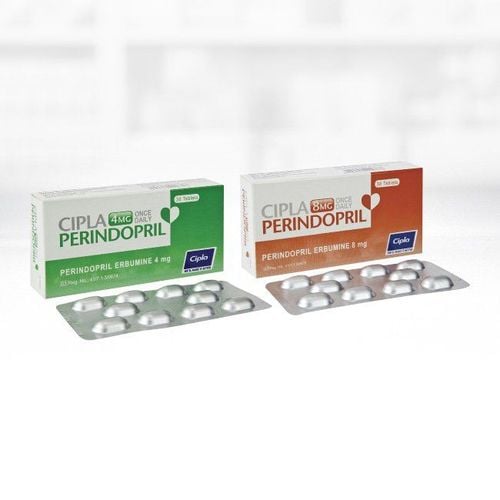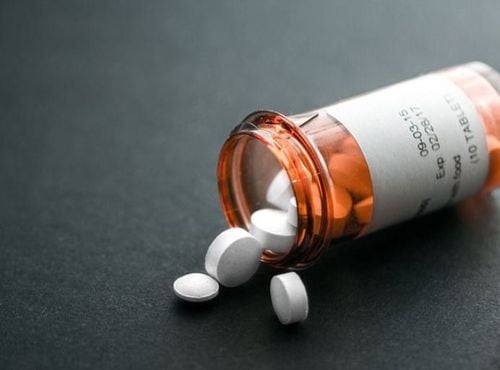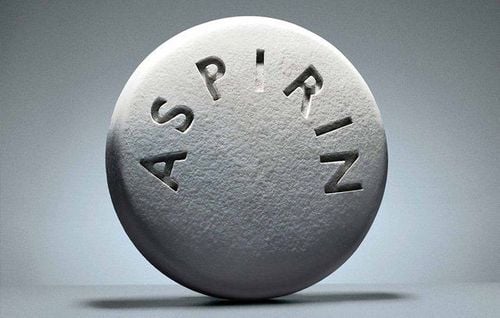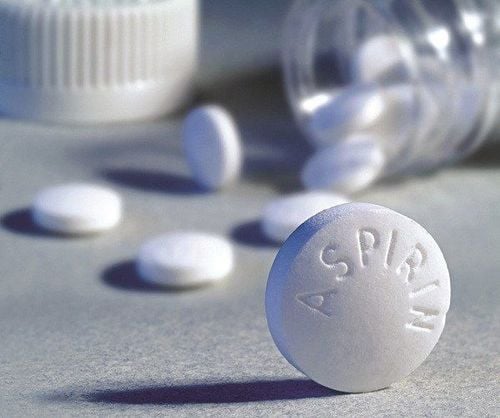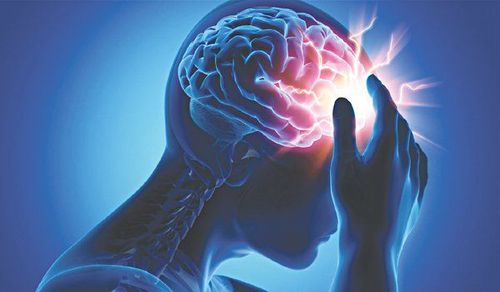This is an automatically translated article.
The article was professionally consulted with Master, Doctor Bui Ngoc Phuong Hoa - General Internal Medicine - Department of Medical Examination & Internal Medicine - Vinmec Da Nang International General Hospital.Transient ischemic attack is a high risk factor for ischemic stroke. Recent studies have noted a relatively high rate of early recurrence after transient ischemic attacks and mild cerebral infarction with about 10-15% recurrence after 90 days, while the recurrence rate after cerebral infarction is relatively high. weighs only about 2-6%.
Therefore, recent American, European, and Australian Stroke Association treatment guidelines all recommend transient ischemic attack as an emergency and require hospitalization, especially for those with multiple medical conditions. risk factor. These patients can reduce the risk of recurrence by up to 80% if diagnosed and treated early and aggressively.
1. What is a transient ischemic attack?
A transient ischemic attack is defined as an acute episode of neurological dysfunction due to transient cerebral ischemia, not associated with long-term cerebral infarction, with clinical symptoms occurring in less than 1 hour. , but can sometimes take longer. This time is different from the old definition of transient ischemic attack when the focal neurological symptoms persist for 24 hours.The development of imaging tools has made it possible to diagnose mild ischemic events with transient neurological signs lasting 24 hours instead of transient ischemic attacks.
In 2002, a group of experts in cerebrovascular disease proposed to change the definition of transient ischemic attack on the basis of histology rather than on the duration of symptoms. This recommendation is widely supported by clinicians.
In 2009, the American Heart Association and Stroke Association (AHA/ASA) approved and officially recognized a transient ischemic attack as an ischemic condition in the brain, spinal cord, or retina of the eye that causes There was transient neurological dysfunction, no acute cerebral infarction was noted, and the 1-hour interval was not valid because it could not distinguish whether there was cerebral tissue infarction or not. The risk of long-term brain cell damage can occur even if transient ischemic attack symptoms last less than 1 hour.

Trường hợp bị cơn thiếu máu não thoáng qua cần được cấp cứu và nhập viện
2. Signs of transient ischemic attack
Areas of the brain are supplied with blood by a separate artery. The narrowing of the artery or, more seriously, the complete occlusion of the artery will lead to reduced perfusion to the corresponding brain area. At the same time, each brain area is responsible for controlling and controlling a number of body functions such as movement, sensation, language, senses...Therefore, when specific brain regions are deprived of blood culture will lead to the appearance of corresponding neurological symptoms governed by that brain area. Depending on the severity, the patient may show some signs such as weakness, paralysis of the limbs, hemiplegia, distortion of the mouth, difficulty speaking, slurred speech, dizziness, dizziness, lightheadedness... In addition, some other less common symptoms of transient ischemic attack such as decreased or impaired concentration, cognitive impairment, Alzheimer's disorder or memory loss...
Brain cells are the type of cells that consume a lot of oxygen in the body and is especially sensitive to hypoxia. If brain cells are not supplied with enough oxygen for 4-5 minutes, they will be damaged and cannot be restored.
Transient ischemic attack reflects a short-term hypoperfusion, self-healing, brain cells have not died, so neurological symptoms only appear transient.
Ischemic stroke has a similar mechanism to a transient ischemic attack, but is more severe when a blood vessel in the brain is completely blocked. At this time, the nerve cells are completely damaged due to lack of blood supply. Therefore, the symptoms will not be reversed, becoming permanent sequelae. In some cases, the symptoms of a transient ischemic attack may progress slowly, while in others they may develop rapidly.
Transient ischemic attack is now quite common, but the number of people who are aware of the seriousness of this disease is not much, by the time the stroke occurs, it is too late.
3. Why is transient ischemic attack dangerous?
Many people worry, wonder if transient ischemic attack is dangerous. Cerebral vascular occlusion can be caused by the formation of blood clots in the arteries. In the pathogenesis of transient ischemic attack, the body has a mechanism to destroy these blood clots so that blood vessels can re-circulate, so that brain cells recover and neurological symptoms. will disappear.In addition, the blockage of blood vessels during a transient ischemic attack may be caused by a thrombus that has drifted to and trapped elsewhere. These secondary clots may come from the heart chambers or the carotid arteries.
Transient ischemic attack is seen as a warning for the possibility of ischemic stroke later in life. Therefore, patients with this disease need early intervention to prevent as much as possible, even if the above neurological symptoms are transient and disappear quickly.
The subjectivity of patients with transient ischemic attack is now not less. They believe that when the symptoms completely disappear, there is no longer a danger. However, the symptoms of a transient ischemic attack are a reminder to the body that there is a possibility of more large blood clots in the future that will completely block the blood vessel. At that time, the risk of recurrence and severity will also be higher, so right from the onset of symptoms of transient ischemic attack, patients need to be examined, monitored, diagnosed and treated aggressively.
A neurologist will make a diagnosis and accurately assess the danger of this disease through information about medical history, living habits, diet, and lifestyle daily and clinical manifestations.
To detect possible brain parenchymal abnormalities, the doctor will use modern imaging tools such as computed tomography (CT) or magnetic resonance imaging (MRI). In addition, in high-risk patients, the doctor may prescribe some necessary tests to look for intravascular thrombosis and take preventive measures to prevent it before it enters the cerebral blood vessels. Current treatment regimens for transient ischemic attacks include controlling the cause, preventing recurrence, and minimizing the risk of stroke and complications. Cases with a history of hypertension, high blood cholesterol levels, diabetes, obesity, unhealthy lifestyle... need active intervention to minimize the risk. In some necessary cases, the doctor will prescribe the use of antiplatelet drugs and anticoagulants to prevent blood clots from forming.

Choáng váng là một trong các triệu chứng cơn thiếu máu não thoáng qua
4. How to backup?
Any subject can experience symptoms of transient ischemic attack, especially the risk of disease will be proportional to age and related diseases. Therefore, to prevent transient ischemic attack, we need to take measures to control risk factors and change negative behaviors. For people with chronic diseases such as diabetes, hypertension, etc., it is necessary to adhere to treatment and control the disease most effectively. Those who do not or do not have the above risk factors should regularly check their health, every 6 months for early detection and timely treatment.Lifestyle habits that can help reduce the risk of a transient ischemic attack:
Quit smoking: this can significantly reduce your risk of a transient ischemic attack; Limit cholesterol and fat: cutting fat in the meal, especially saturated fat and trans fat, can limit the formation of atherosclerotic plaques in the blood vessels; Eat more fruits and vegetables: Foods rich in potassium, folate and antioxidants can protect the body against this disease; Limit salt: if you have high blood pressure, you need to avoid salty foods, don't use a lot of salt in your meals to control your blood pressure well; Exercise regularly: Exercise helps promote overall health in general and brain health in particular; Limit alcoholic beverages: alcohol can affect blood circulation. Therefore, experts recommend no more than 1 drink per day in women and 2 drinks in men; Maintain a healthy weight: Being overweight is one of the risk factors that contribute to blood clots and other diseases such as high blood pressure, cardiovascular disease and diabetes. Transient ischemic attack is a high risk factor for ischemic stroke. Therefore, be careful if you have ever had signs of a transient ischemic attack to avoid dangerous complications from a stroke.
To screen for a stroke after the appearance of signs of a transient ischemic attack, Vinmec doctors may prescribe a brain MRI without magnetic contrast injection, with a 3D MRA TOF pulse sequence, supplemented with a pulse sequence. Axial T2W and or axial FLAIR in 7 minutes, helps to detect brain aneurysms, cerebral arteriovenous malformations, dural arteriovenous fistulas, cerebral artery stenosis and some abnormalities in demand brain tissue. When there is an abnormality on the cerebral blood vessels, the doctor will prescribe a magnetic contrast pump to investigate more cerebral vascular imaging (MRA). From there, there is an accurate assessment of the shape and size of the abnormality to give appropriate treatment indications.
The 3.0 Tesla MRI system at Vinmec hospitals across the country is equipped with state-of-the-art equipment by GE Healthcare (USA) with high image quality, allowing for a comprehensive assessment, not missing the damage but reducing the damage. shooting time. Silent technology helps to reduce noise, create comfort and reduce stress for customers during shooting, resulting in better image quality and shorter shooting time.
>> See more: Nattou Ichou health food by Pharmacist, Master Pham Thi Kim Dung - Pharmacist Mixing drugs - Faculty of Pharmacy - Vinmec Times City International Hospital






